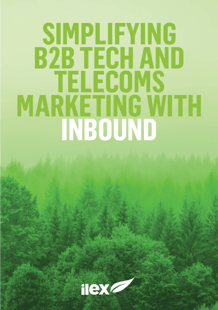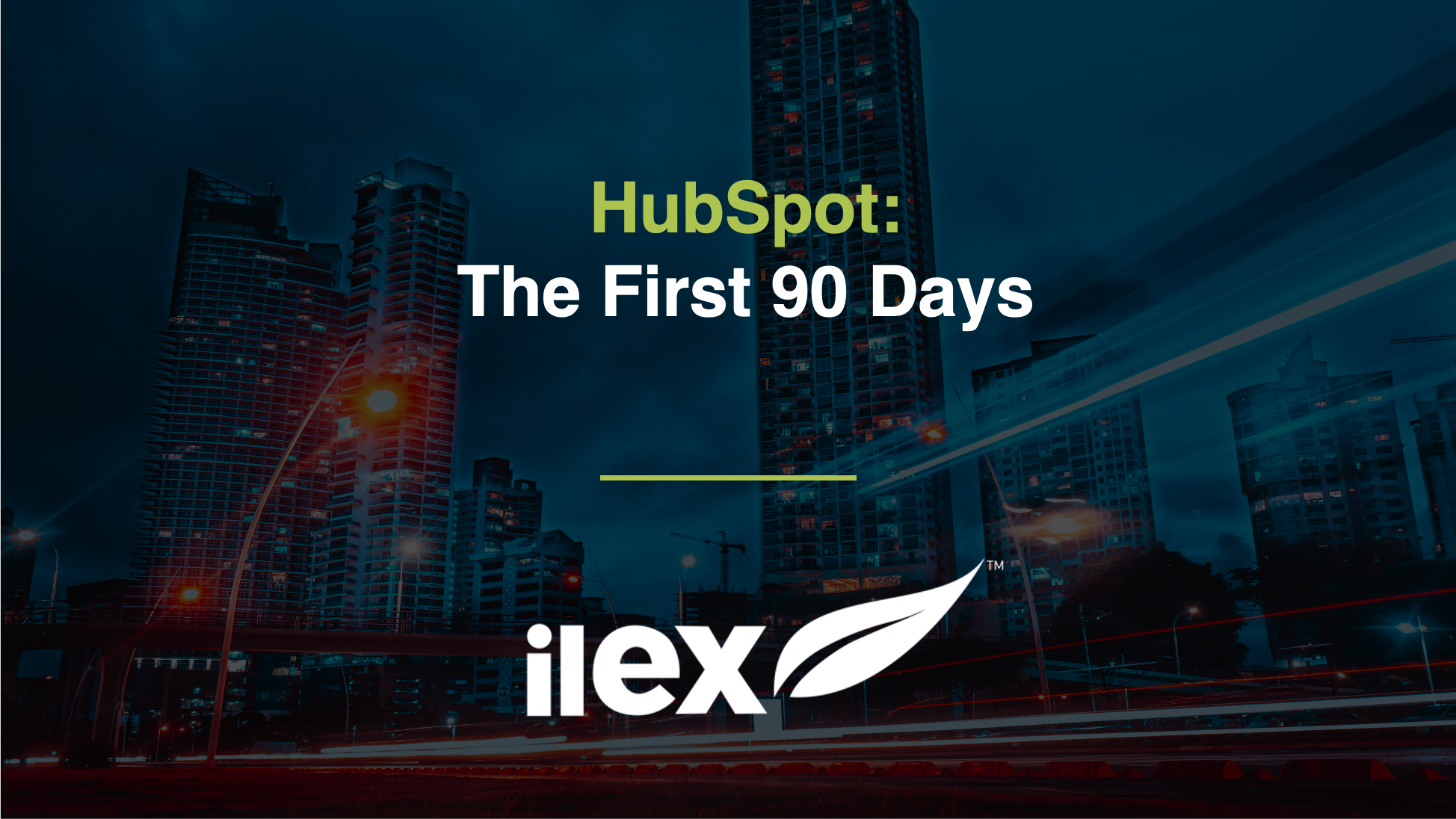Are you thinking about adopting an Inbound marketing strategy for your B2B company, but unsure about the next steps to take? HubSpot is an Inbound-focused marketing automation platform that simplifies this process.
At Ilex, we make it as simple as possible to execute an Inbound marketing strategy and onboard HubSpot. Here is what the first 90 days will look like:
The First Month – Building the Foundation
- The start of the first month will include your account and technical setup, such as importing contacts and linking social accounts. As well as this, you will develop personas to use with your Inbound strategy and integrate these into your account. You will also map out a persona’s buyer’s journey and define stages of the customer lifecycle.
- You will then focus on lead generation in terms of creating and embedding lead collection forms in your website, setting up leadflows, creating lists to segment leads and identifying which segments to focus on. You will also look into email marketing in terms of recreating current emails in HubSpot, learning best practice and learning how to best promote content such as blogs via email.
- After this, you will determine which processes can be automated and create workflows. Content creation and distribution via social is the next focal point, in terms of creating a content strategy, creating topic clusters and scheduling social posts amongst other tasks. You’ll then focus on conversion paths by identifying your content offers, building landing pages and thank you pages, and using CTAs to drive conversions. The next steps are determining your distribution strategy and creating smart content.
- You’ll then focus on reporting in terms of business objectives and current KPIs, identifying goals and setting up dashboards and custom reports. Next comes lead scoring and alignment in terms of defining explicit and implicit actions of a lead, prioritising based on leads and setting up scoring, discussing optimisations to current processes based on existing data, and discussing best practices around sales, services and marketing alignment.

Download our ebook today!
The Second Month – The Launch
- The start of the second month is when you can expect to fully launch a new campaign. You should create a landing page for your new offer and link to this page from all relevant content and social channels. After this, emails can be sent to prospects to direct them to the new landing page.
- You can then draft, distribute and pitch a press release for the launch of your new campaign, securing global coverage that can be highlighted using social media. You could also expect to pitch interviews to tell your story and generate interest, in order to become something more to prospects than just basic products.
- The next step will involve social media content in terms of promoting your new offering. You should plan and schedule social media posts across platforms, for example 6-8 LinkedIn Posts and 25-30 Twitter posts, which should include links to your new offer landing page, press release, industry trends and research. You should monitor and respond to any interactions and ensure the posts are distributed evenly throughout the month.
The Third Month – Building Momentum
- The third month should be focused on building momentum. You can firstly do this through the creation of blog posts – we recommend creating 3, each being 400-500 words long. These should be focused on the discussion of your customers’ pain points and how your business can solve them.
- You can then focus on interconnecting each post using SEO tools in HubSpot, in order to improve your website’s organic search rankings. You should also focus on promoting these blog posts across social channels, keeping up the social media strategy in the same way as the second month. It is important to deliver consistent phrasing and messaging across all platforms to ensure a strong brand personality.
- As well as creating blog posts, you can expect to develop longer pieces of content during the third month. A 6-8-page PDF report focused on challenges your company has solved could be a helpful guide for potential customers to refer to. It is important to communicate your proposition to customers and how they can engage with you. Use cases or success stories are good to use within longer pieces of work to help develop trust. You can then email this report to prospects and print before events such as trade shows.
After these three months, you would have moved from a traditional marketing strategy to a more effective Inbound approach. You can expect to have a stronger, more active presence online which would not have been as prominent previously.
This 3-month-strategy will create scalable, data-driven and effective Inbound marketing, making a real impact on your bottom-line. HubSpot’s world-class all-in-one platform will help you attract, engage and sell to prospects, as well as grow and position your B2B company as an expert in your field.
If you would like to find out how we can help you develop a successful Inbound marketing strategy which attracts, engages and delights customers and prospects, book a consultation today!



